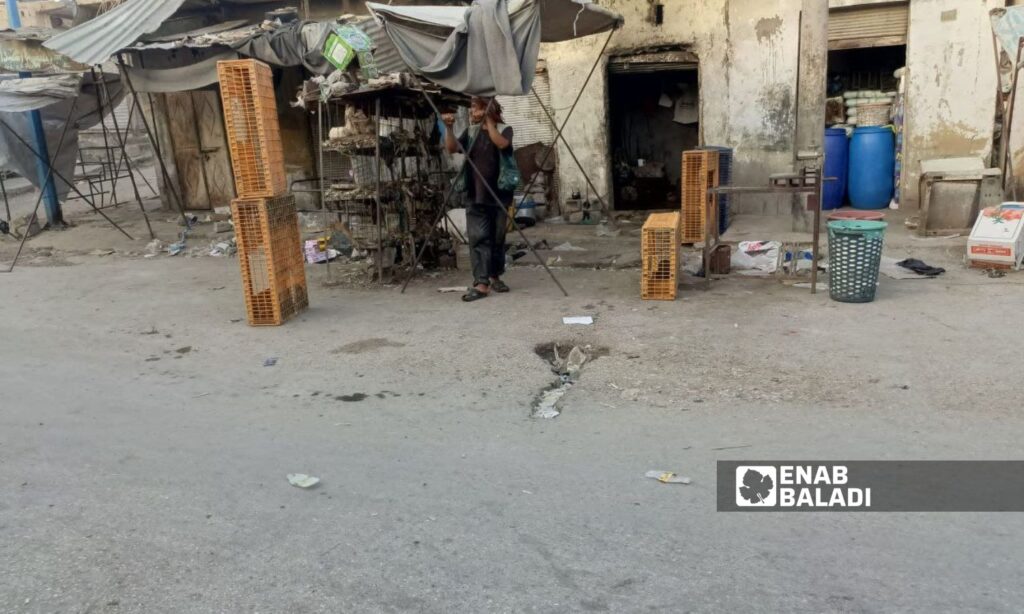Deir Ezzor – Obadah al-Sheikh
Dozens of poultry farms in eastern rural Deir Ezzor have ceased operations due to several reasons, the most notable being the rising prices of fuel and feed, as well as the lack of support.
These factors have pushed poultry farmers to buy chickens from Qamishli, Manbij, and Raqqa, and sell them at higher prices, essentially turning them into distributors rather than breeders.
Elias al-Rawi, who owns three poultry farms in eastern rural Deir Ezzor, told Enab Baladi that the farms lack electricity and rely on generators that consume large amounts of diesel and oil. The daily diesel need reaches a barrel, which costs 1,050,000 Syrian pounds. “Not to mention the high prices of feed and weather fluctuations.”
Rough roads pose an additional problem, as the farms are far from residential areas, primarily located in the desert. This also deprives them of clean water, according to al-Rawi, who estimated his losses at over 10,000 dollars in the past two years.
He added that despite the high demand for chicken meat, the lack of electricity and accumulated debts forced him to close two farms and keep one to pay off the accumulated debts.
There is a lack of support and attention to the poultry sector, including the provision of medicines to combat disease outbreaks, such as hepatitis, which leads to the death of chicks and significant losses for the farm owners.
Khalil al-Akidi, from the town of al-Arqoub in eastern rural Deir Ezzor, owns two poultry farms and has been in this business for nine years. He told Enab Baladi that his business provided job opportunities for ten people and produced between six and eight flocks every six months.
Each flock yields about 10,000 chicks, but due to the high prices of fuel, feed, and medicine, and the lack of care, he closed one farm while retaining the other, with accumulated debts and losses exceeding 7,000 dollars, in addition to losing more than 7,000 chicks last year.
He added that the Autonomous Administration of North and Eastern Syria (AANES) provides no support for this sector compared to others.
Rising costs and exchange rate fluctuations
Among the foremost causes of the poultry sector’s decline are the high breeding costs and the impact of the fluctuating exchange rate of the US dollar against the Syrian pound.
At the time of publishing this report, the exchange rate reached 14,650 Syrian pounds per the S-P Today website.
Ahd al-Hais, a feed trader, told Enab Baladi that the price of feed has almost doubled. The price per ton, which used to be 400 dollars, has now reached 735 dollars, a type relied upon by bird and poultry breeders.
Another type, the “mixed type,” has also seen a price increase to 465 dollars, up from 300 dollars per ton six months ago. The price of yellow corn has risen as well.
In the areas under the control of the Autonomous Administration in northeastern Syria, there are hundreds of poultry farms, some of which have closed due to losses. The high prices of feed and fuel are among the major problems facing poultry farms in the region.
The residents of the area live under dire living conditions, similar to other parts of Syria. The regions under the Autonomous Administration are considered among the richest in Syria, as they contain most of the oil wells and are described as “Syria’s food basket” due to the significant agricultural activity there.

